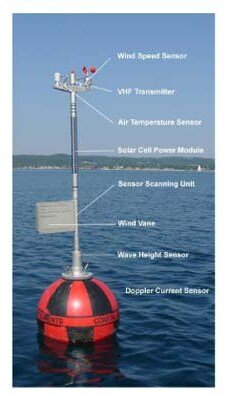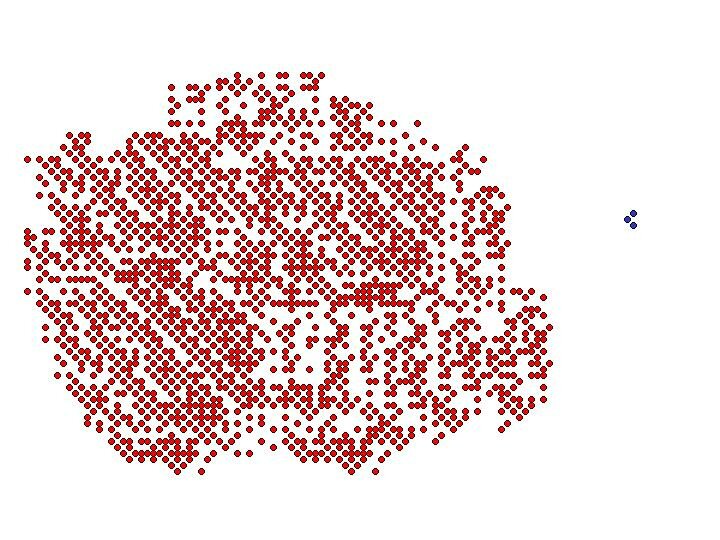weather forecasting tools and investment in red…………………….salmon in blue.
…
Growing up on Haida Gwaii (islands off the coast of British Columbia) “weather-obsession” is a common ailment. When one lives on islands out in the ocean, weather is important; crucial in many cases. Anyone planning to travel on the sea must have a decent idea of what the weather is doing — it is knowledge meaning the difference between life and death.
With weather there is local and regional; daily and seasonal, and so on. These must be considered when traveling on the water. Not just on islands in the sea but also large lakes and even large rivers. For example, kayaking in the inlets of Haida Gwaii, or on the open ocean a traveler needs to be aware of the shift in winds that occur as tides rise and fall, the shifts from morning to evening, inshore and offshore breezes and so on.
In days past, local and community knowledge dictated how weather was forecast: “Red sky at night, sailor’s delight — red sky in the morning, sailor’s take warning”. On Haida Gwaii, the difference between a wind from the south-east and wind from the south-west is dramatic; south-west often means squalls and weather that may pass. South-east means take cover — and if it’s in the fall or winter — you may need to take cover for weeks.
 Forecasting weather now is an incredibly complex and techno-gizmo dominated affair; it continues to get more and more complex all the time. There are satellites orbiting Earth strictly for weather purposes – these are sent out costs of billions of dollars. On the ocean are weather buoys that measure air pressure, wind direction and strength, waves, swell and wave direction. There are planes flying around; weather balloons launched. There are airports, regional weather stations, local weather stations and so on, and so on.
Forecasting weather now is an incredibly complex and techno-gizmo dominated affair; it continues to get more and more complex all the time. There are satellites orbiting Earth strictly for weather purposes – these are sent out costs of billions of dollars. On the ocean are weather buoys that measure air pressure, wind direction and strength, waves, swell and wave direction. There are planes flying around; weather balloons launched. There are airports, regional weather stations, local weather stations and so on, and so on.
Weather obsession is a particularly acute illness. One particular member of my family, still living on the islands, has serious weather obsession. She has website bookmarks with text forecasts, satellite images, weather buoys that surround Haida Gwaii, including some far offshore. I can phone her and I can get a full reporting hour by hour of where a low-pressure weather system is sitting and the strength of air circulation (i.e. wind), relative humidity, barometric pressure rising or falling, sea swell direction and strength and even distance between peaks of waves.
If you’re planning to travel by ferry between the mainland and Haida Gwaii — a six hour crossing in calm seas — this is important information. Staff on the ferries are certainly watching, no one wants to get caught in a “south-easter” blowing over 100 km/hr with wave swells topping 10 metres. (they won’t sail when the seas are over 3 metres… but accidents happen).
 One Christmas about ten years ago — my brother and I were visiting the islands. We were delayed on the way out and spent Christmas Day on the ferry due to weather. Our travel plans back were delayed by ten days. An intense low pressure system moved in to the area and the ferry could not sail. Swells on the Hecate Strait were reaching over 14 metres (that’s almost 50 feet!) and on a sustained basis for days. The really scary part was there were only eight seconds between passing wave crests.
One Christmas about ten years ago — my brother and I were visiting the islands. We were delayed on the way out and spent Christmas Day on the ferry due to weather. Our travel plans back were delayed by ten days. An intense low pressure system moved in to the area and the ferry could not sail. Swells on the Hecate Strait were reaching over 14 metres (that’s almost 50 feet!) and on a sustained basis for days. The really scary part was there were only eight seconds between passing wave crests.
Not pleasant.
Thankfully weather forecasting was able to predict this with a certain amount of accuracy.
Enough accuracy to say: “stay the hell off the ocean!”
….
What does this have to do with salmon forecasts?
No matter what tools are used for forecasting of any kind — financial markets, sports teams odds, crop yields, elections, etc. — there is always margins of error. Some might assume that more tools, techno-gizmos, mathematical equations, and like that utilized — the more accurate the forecasting.
That may be true to an extent. If we look at weather forecasting… the one-day outlooks are getting better; however there are still so many factors in these complex systems that it is very difficult to be entirely accurate. There are also the unforeseen unforeseens; the unknown unknowns (thank-you Mr. Rumsfeld).
As we move out to five day forecasts, as we all well know, the forecasts become a lot less accurate, a lot less reliable. They are like a general guidance
And thus the salmon comparison.
Forecasting salmon returns is very, very difficult. There are almost as many potential factors affecting salmon, as there is weather — if not maybe more. Even weather affects salmon — for example the movement of the Aleutian Low Pressure system in the Gulf of Alaska and the California High. These can dictate ocean currents and nutrient upwelling and cycling throughout the North Pacific — the salmon “pasture”.
Now, if we compare the amount of tools and investment that guide weather forecasting and compare this to salmon it looks something like this:
Granted maybe weather has larger economic implications.
When it comes to weather though, meteorologists have accepted that they can not account for and factor in all the ‘unknown unknowns’ into the equation. Meteorologists have accepted that weather is part of an incredibly complex system that humans can only barely begin to understand — no matter how powerful our computer modeling and no matter how many indicators, phenomena, and quirks and quarks we factor into our equations.
One new thing is discovered, and this simply opens up a whole new set of questions.
Sadly though — this does not seem to be the case with salmon.
The absolute bulk of the message, the spending, the ‘investment’, and the research I am seeing in salmon discussions is that:
- we need more research,
- we need more technology,
- we need more accurate forecasting,
- we need more computer modeling,
- we need more accurate fisheries management equations (like Maximum Sustainable Yield),
- we need more telemetry and sonar and radio tags and techno-gizmos, and
- we need to know more about the ocean and so on, and so on, and so on.
This isn’t like the weather. There will always be weather. Weather is not going in extinct in some areas. We can’t eat weather.
The amazing thing with weather and techno-gizmos and weather buoys and satellites and up-to-the-minute web forecasts and weather channels and, and, and…
If you stand on the dock with an old-timer or someone knowledgeable about local conditions, they will look up to the sky and say: “I don’t know if you should head out, that breeze is turning to the south-east, it could get a little choppy out there….”
98 times out of 100 they’re probably right.
This same knowledge exists in local communities about salmon runs. When they migrate, how they migrate, where, indicators of strength, and so on.
This knowledge can’t be captured by sonar, or by telemetry, or by computer modeling, or by simulations, or by mathematical equations…..
It’s captured by being there (not in some meeting in Vancouver…)

